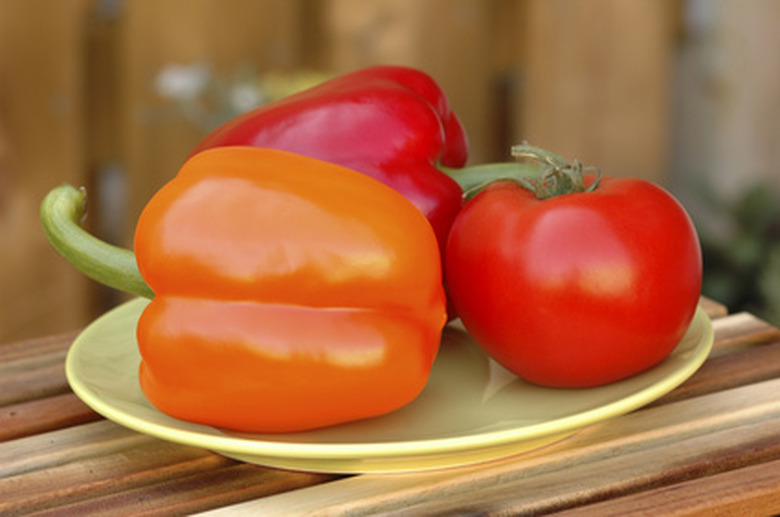How To Plant Veggies In Plastic Totes
Growing vegetables in a plastic tote is an ideal solution for gardeners who don't have a plot of ground large enough for a traditional garden. Although it may not be possible to grow a full-scale garden this way, a plastic tote can hold enough veggies to keep you in fresh salads all summer long, and the produce will taste every bit as delicious as vegetables planted in a full-size garden.
Step 1
Purchase bedding plants at a nursery or garden center to create a ready-made vegetable garden. If desired, you can plant vegetable seeds directly in the container in spring, or you can start the seeds indoors about eight weeks before the last frost in your area.
Step 2
Scrub the plastic tote with soapy water. If the tote has previously been used for planting, scrub with a mixture of 10 parts water and one part household bleach. Rinse the plastic tote with cool water. Continue rinsing until all traces of bleach have been removed.
- Growing vegetables in a plastic tote is an ideal solution for gardeners who don't have a plot of ground large enough for a traditional garden.
Step 3
Drill small drainage holes around the base of the plastic tote, about 1/2 inch from the bottom, with about 1 inch between each hole. If you don't have a drill, you can use a hammer and a nail to make small holes, or you can cut slashes with a sharp knife or craft knife.
Step 4
Place 1 inch of gravel in the bottom of the plastic tote. The gravel will improve soil drainage and will prevent soil from washing out through the drainage holes.
Step 5
Fill the plastic tote with commercial potting soil to about 3 to 4 inches from the top of the tote. Do not use regular garden soil, which can contain pests, bacteria and weed seeds. It will also compact in the plastic tote and become very heavy.
- Drill small drainage holes around the base of the plastic tote, about 1/2 inch from the bottom, with about 1 inch between each hole.
- Place 1 inch of gravel in the bottom of the plastic tote.
Step 6
Mix a timed-release granular fertilizer into the potting soil. Read the directions on the package carefully to determine the appropriate amount of granular fertilizer for your plastic tote.
Step 7
Water the potting mixture until the potting mixture is damp clear through, but not dripping wet.
Step 8
Plant the plastic tote with the desired vegetable plants or vegetable seeds. Tuck seedlings gently into the potting mix to avoid damaging their roots. Leave 4 to 6 inches between each plant, and thin the plants as needed to keep the vegetables from becoming crowded.
Step 9
Place the plastic tote where the vegetables will be exposed to adequate sunshine. Most vegetables require at least six hours of sunlight each day. However, lettuce and greens such as spinach and chard will do better if they are not exposed to hot afternoon sunlight, and vegetables like radishes, onions and parsley will do fine in partial shade.
- Mix a timed-release granular fertilizer into the potting soil.
- Place the plastic tote where the vegetables will be exposed to adequate sunshine.
Step 10
Check your plastic tote every day, and water if the top of the soil feels dry to the touch. Remember that soil in containers will dry out quickly, especially in hot weather. Be careful not to overwater, as the roots of your vegetables can rot in too much moisture.
Tip
Plan your plastic tote garden carefully. Most vegetables that can be planted in the ground will do well in a large plastic tote, including eggplant, beans, squash, radishes, carrots, onions, peppers, tomatoes, chard and parsley. If you're planting a small plastic tote, radishes, herbs, dwarf tomatoes and lettuce are good choices. To have fresh salad vegetables all summer long, plant a few fast-growing vegetables such as lettuce, radishes and green onions every two weeks. That way, when one plant is finished, another one will be ready for harvest.
Things Needed
- Plastic tote
- Bedding plants or vegetable seeds
- Soap
- Water
- Household bleach
- Drill or hammer and nails or sharp knife
- Gravel
- Commercial potting mix
- Time-release granular fertilizer
- Garden hose or watering can
